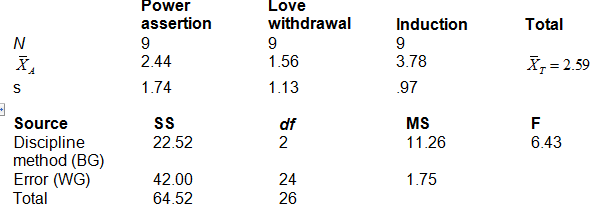Response to invention represents a single national model
a. True
b. False
Indicate whether the statement is true or false
F
You might also like to view...
Identify three things parents could do to help their child's adjustment to a new classroom
What will be an ideal response?
The consistency of caregiving and emotional investment on the part of a teacher has a direct relationship to the development of a child's brain
a. True b. False Indicate whether the statement is true or false
The National Council for the Social Studies (NCSS) standards focus on 10 integrated themes (strands). What is one of the strands of today’s social studies curriculum?
a. Science, technology, and society b. Foreign government and politics c. Names, dates, places, and events d. Learn what made the United States the country it is today
You decide to conduct the analytical comparison of Induction vs. Power assertion. Which of the following is the appropriate critical value for this analytical comparison?
One part of raising children is having to discipline them. Hoffman (1963) described three common discipline methods used by parents: power assertion (use of punishment, force, taking away of privileges or possessions), love withdrawal (ignoring or refusing to speak to the child, explicitly stating a dislike for the child), and induction (reasoning with the child, communicating standards of behavior). Barnett, Quackenbush, and Sinisi (1996) noted that little attention had been given to children’s preferences for these different methods. From reviewing the literature, they hypothesized children express a greater preference for induction than power assertion, which in turn is preferred over love withdrawal.
They collected data from a sample of middle school students. Each student watched a videotape of a parent disciplining a child using one of the three forms of discipline. After viewing the videotape, each student rated the effectiveness of the discipline on a 1 to 5 scale, where 1 = “Not at all effective” and 5 = “Very effective”. The results of their analyses are presented below:

a. 3.37
b. 3.40
c. 3.63
d. 4.49